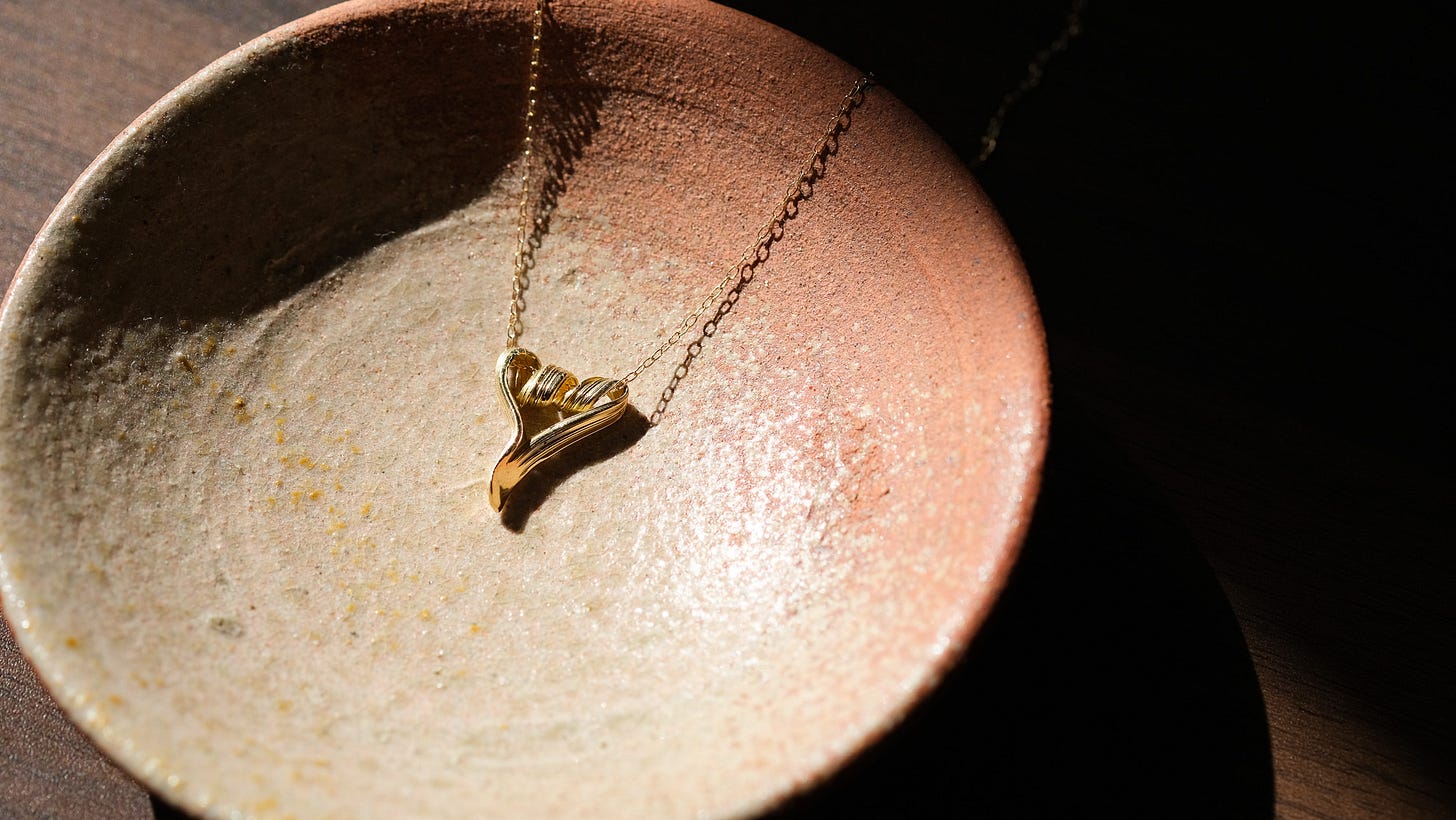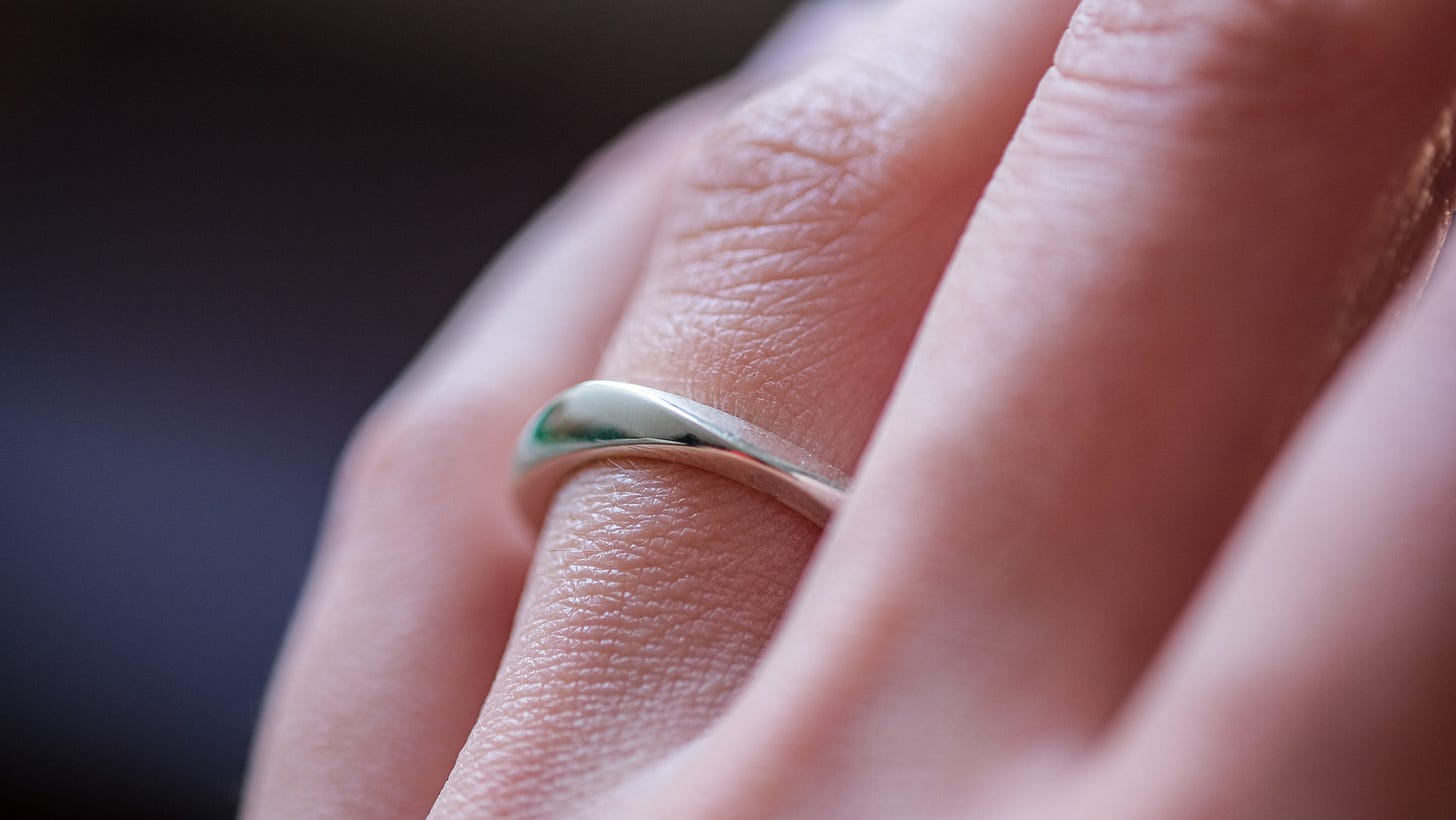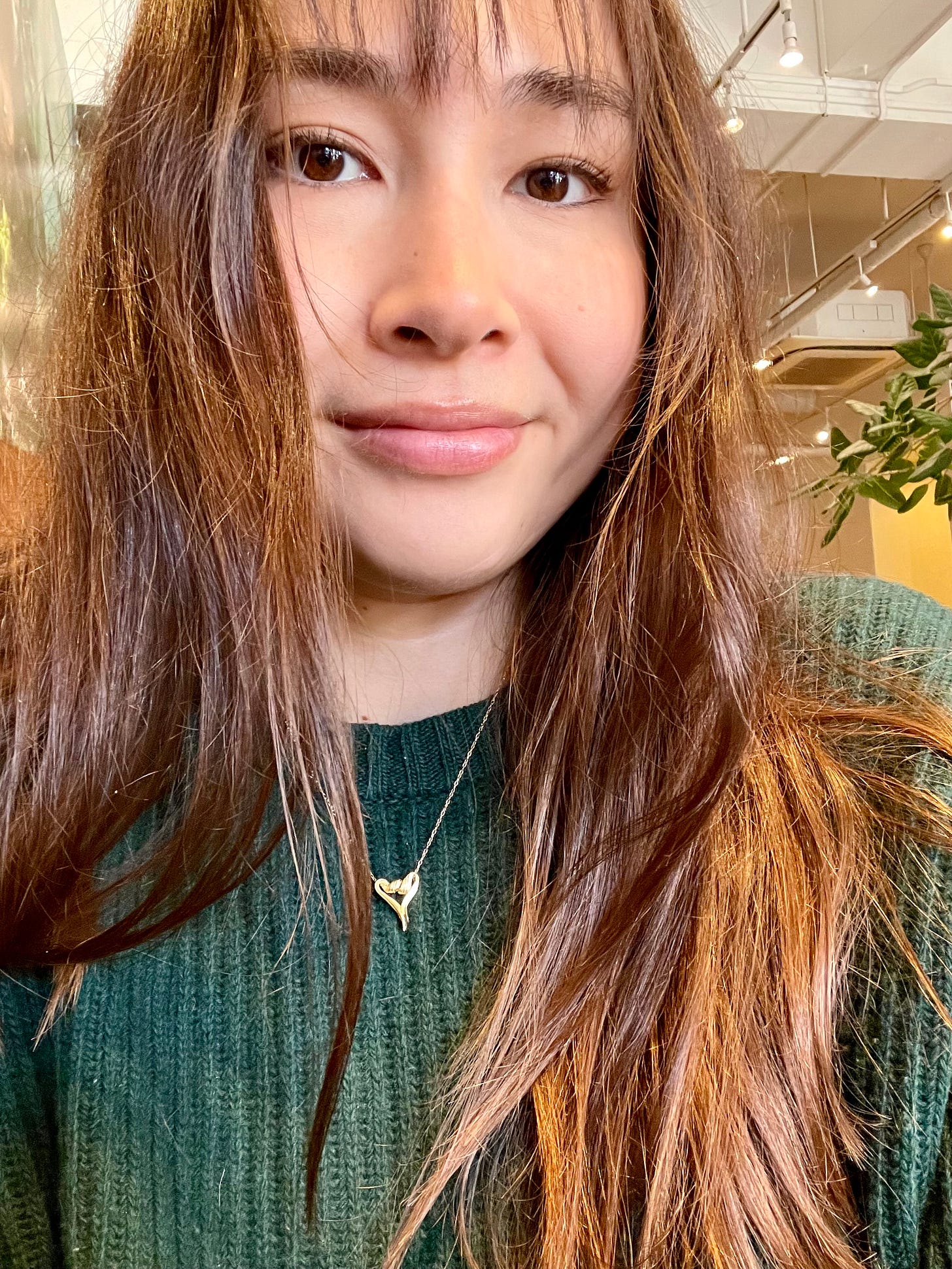Kaizen (改善) is the Japanese philosophy of continuous improvement. It originated in corporate contexts, but I like the idea to guide personal challenges.
The core principle is that small changes sustained over a period of time lead to higher quality and efficiencies. Everything can be improved.
For my jewelry, the opportunities to apply kaizen are abundant: designs to better, perfection to reach, and an endless amount of skills to gain.
Working on designs

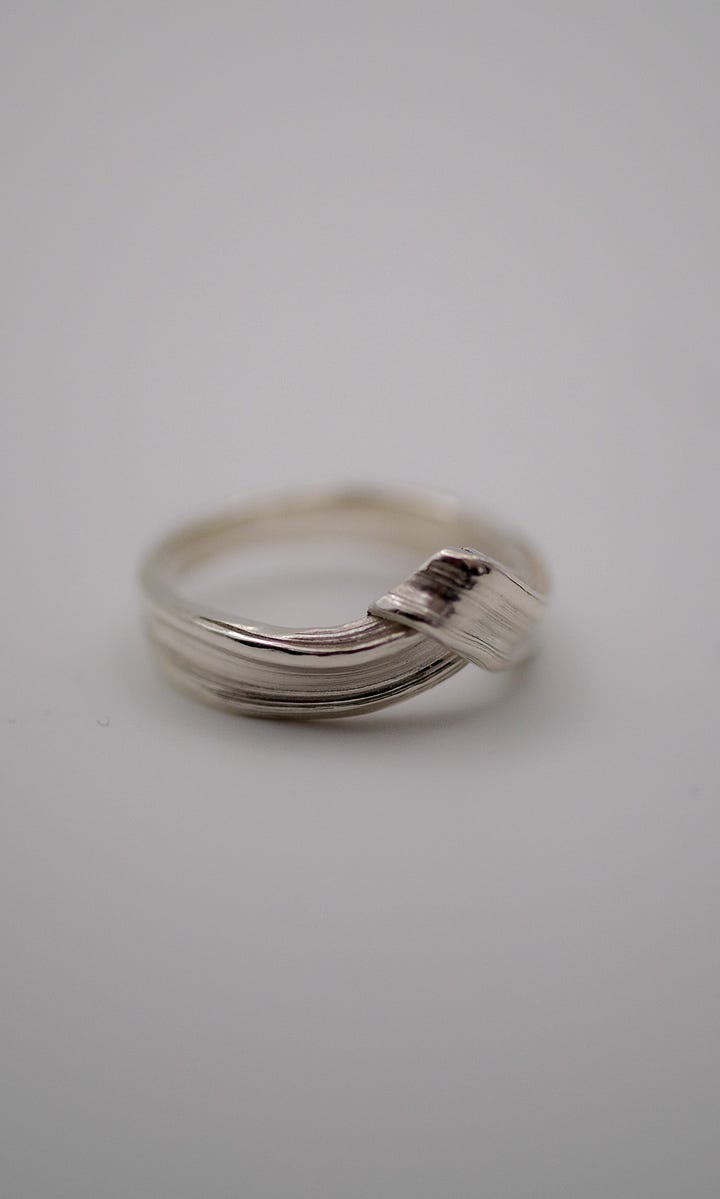
I completed the first iteration of a new ring design. The ring is my take on a fairly popular wedding ring style where the band has a pointed peak at the center (often to allow for nesting with an engagement or other ring).
I love the way the front of the ring looks (pictured above) but I am considering redoing it to thicken the back of the band (pictured below).
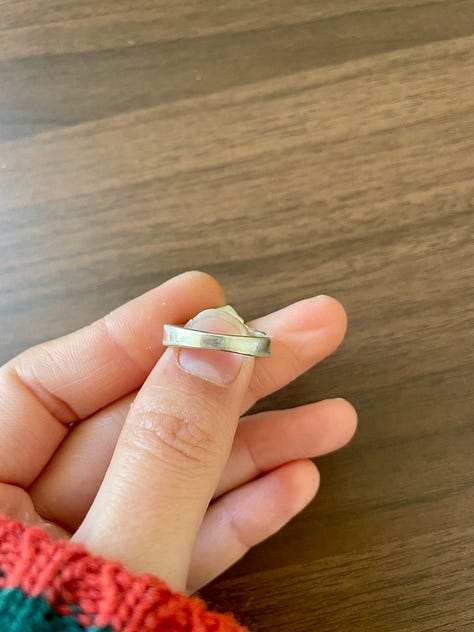
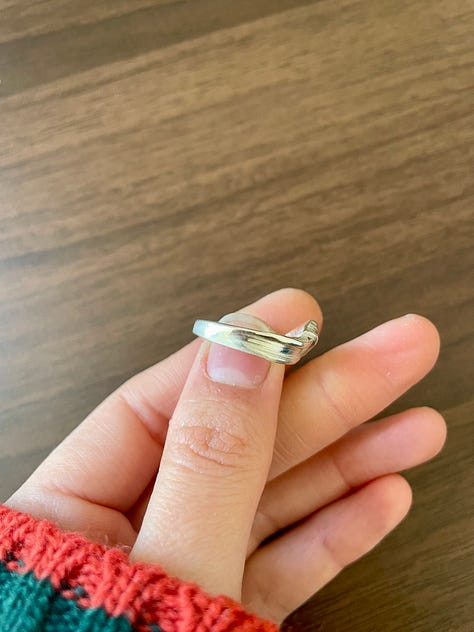
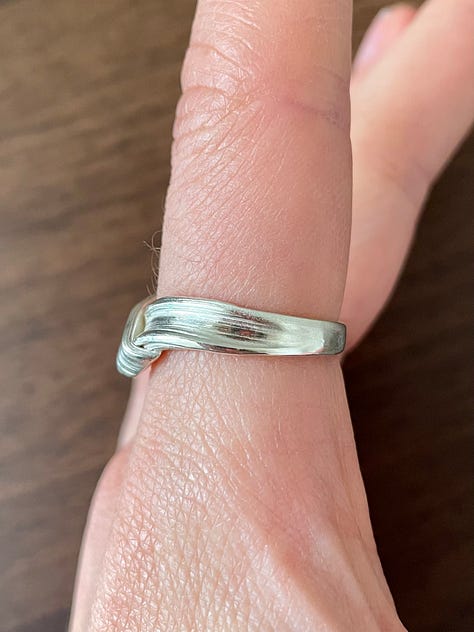
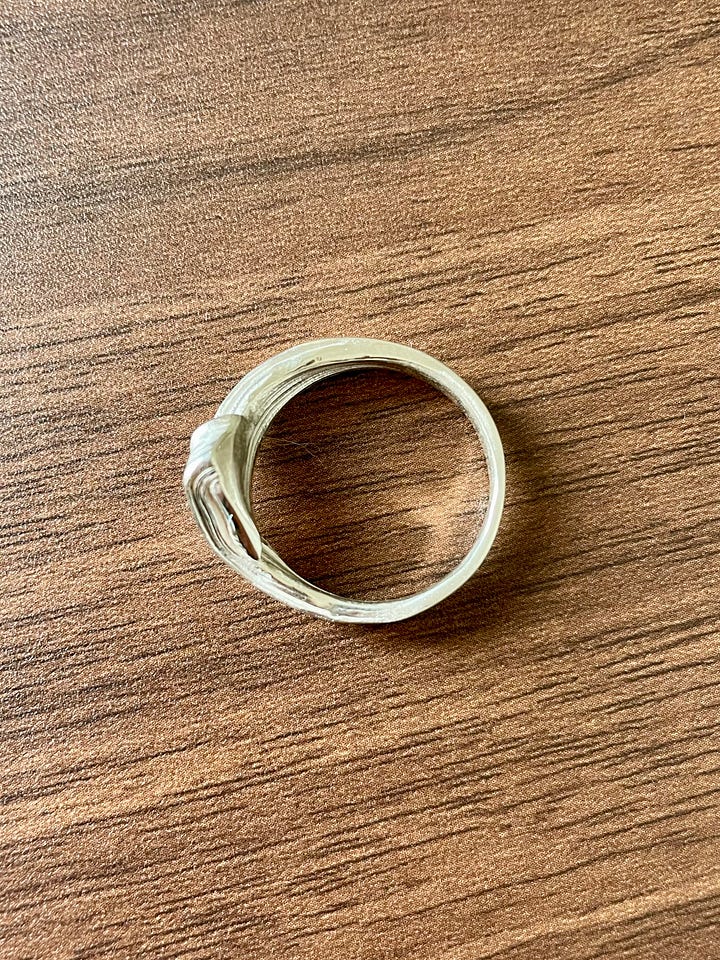
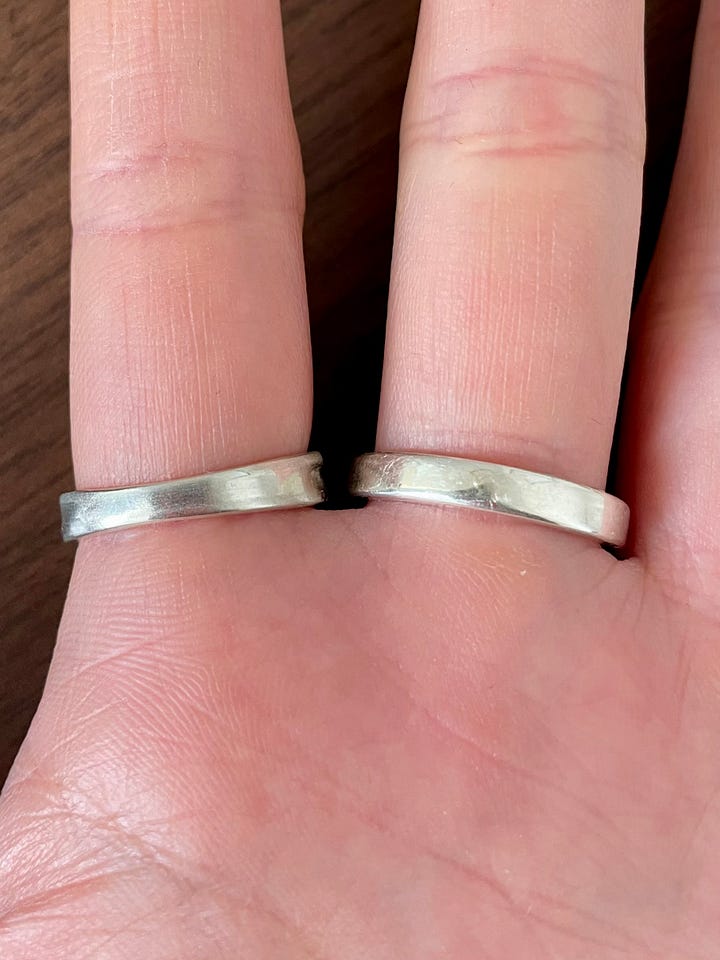
On the one hand, leaving the back thinner and slightly asymmetrical makes the ring feel more relaxed (it also slightly reduces the weight of the ring). On the other hand, the front of the ring is quite heavy so thickening the back might feel more balanced.
I have my own inclination, but am curious for your thoughts!
Hand-making “perfection”
I design and make all of my pieces by hand. I don’t use CAD (Computer-Aided Design) and 3D printing.
There is absolutely nothing wrong with using software to design or make jewelry - I have bought jewelry made in that way before and will again!
I choose to hand design and craft jewelry because I enjoy it. But I’m also a perfectionist. And when making something by hand, “perfection” is very difficult to achieve. You can’t program in perfectly uniform dimensions or smooth finishes.
It’s an interesting conundrum. How much do you adjust your expectations to your current skills versus try to improve your skills toward, and potentially never meet, your expectations?
The example from my ring earlier applies. I can continuously work on the design and achieve a pretty close to symmetrical back for the ring, but it will never be as symmetrical as a 3D printed ring. Is pretty close good enough, or do I keep redoing it until it is symmetrical under any level of magnification?
It’s not as existential of a dilemma as my last few paragraphs seem to spiral toward, but I wonder how to reconcile flawless, factory-level expectations with the realities of handmade art.
Honing skills
Over the past week I practiced a lot of different skills. I filed down a ring (pictured above), gained confidence polishing pieces, and pulled better ribboning in Mitsuro (pictured below).

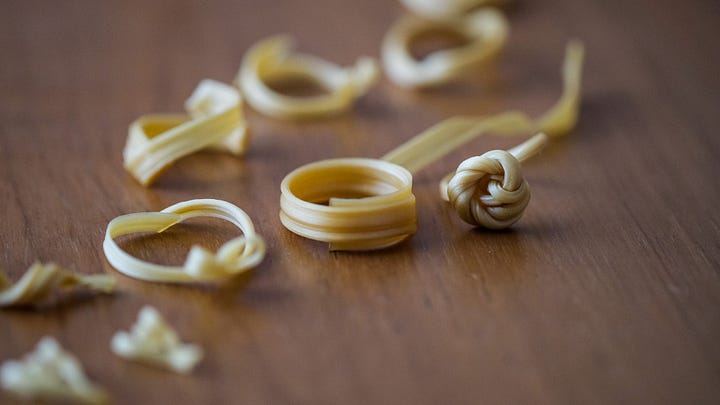
I polished an 18k gold piece for the first time (the heart pendant pictured above) which I was a bit nervous to do! It was incredibly satisfying to see bright yellow gold shine through and I’ve been happily wearing it around Tokyo since.
As the weeks pass and I learn more skills, it’s fun mixing and matching techniques to achieve various outcomes. For example, in my new ring design I combined making the ring first in wax then filing the cast metal to further refine the shape. And now I may need to bring it back to wax to try again!



